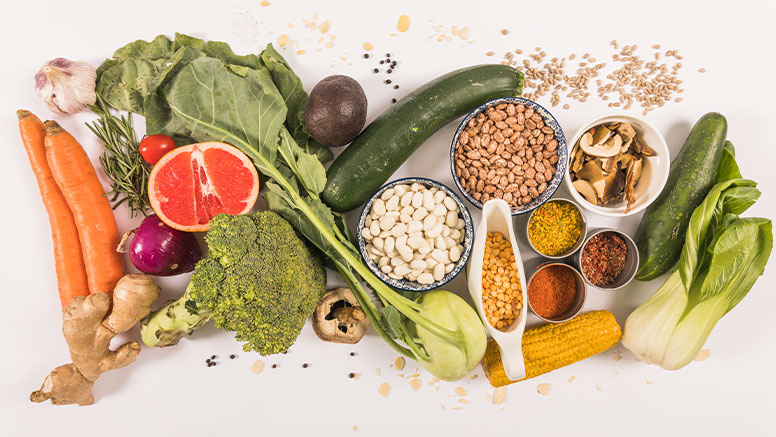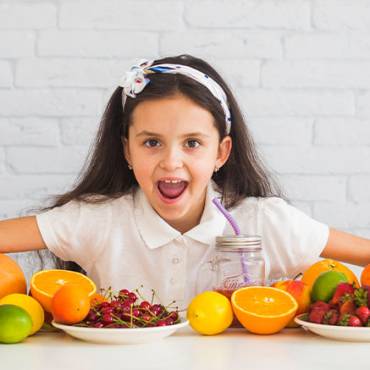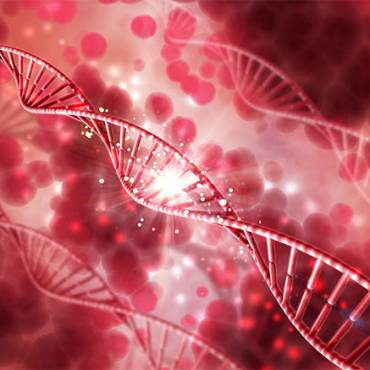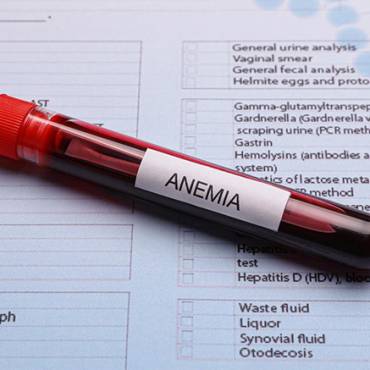The body cannot synthesize iron and must acquire it. Food is the only natural source of iron. Dietary iron has two forms: heme and non-heme.
| Types of dietary iron: Heme Iron vs Nonheme Iron | |
|---|---|
| Heme iron | Non-heme iron |
| Consist of heme protein attached to iron | Does not contain a heme protein attached to the iron |
| Iron that comes from animal food sources like meat, chicken, egg yolk | Iron that comes from plant sources like cereals, pulses, legumes, fruits, and vegetables |
| Higher absorption | less well absorbed |
| Excess heme iron can cause health risks | Does not cause health risks |
Heme iron could contribute 40% of total absorbed iron during iron deficiency. Whereas the body absorbs iron from plant sources better when eaten with animal sources food and/or foods that contain vitamin C. Studies show that iron absorption is estimated to be 14–18% for mixed diet consumers and 5–12% for vegetarian diet consumers. Thereby, less than one-fifth of the dietary iron gets absorbed by the body.
Sources of iron
Iron is present in a variety of foods, so eating a varied and healthful diet is important.
| Heme sources of iron | Non-heme sources of iron |
|---|---|
| Animal meat, particularly liver and spleen, is very rich source of iron.
Boiled egg yolk is rich in iron as compared to egg white. (Do not give egg whites to babies under 1 year old.) Fish on the contrary are not a very good source of iron. (Babies under 1 year old should not eat shellfish such as lobster, shrimp or scallops.) |
Cereals & Pulses: Horse gram dal, soybean, moth beans, bajra, ragi, rice flakes (poha) wheat flour, and jowar provide a higher amount of iron. Arhar, moong, maize and rice have the lowest iron content.
Green leafy vegetables: beet greens, pumpkin leaves, and radish leaves having very high-iron content but usually not consumed others such as curry, mint, parsley, coriander, and drumstick though high in iron content, are consumed either less frequently or in small quantities. Other: Sesame seeds, mustard seeds, cashew nuts and almond, are fairly rich sources of dietary iron. Jaggery, though rich in iron, is usually consumed in small amounts |
Eating iron rich foods along with a source of vitamin C (citrus fruits and juices, etc.) can help replenish your body’s iron stores, as vitamin C enhances the absorption of iron.
| Sources of vitamin C | |
|---|---|
| Fruits | Vegetables |
| Amla, Cashew fruit, Guava, Papaya, Lime, sweet Musambi, Lemon, Muskmelon Orange Pineapple Ripe tomato |
Carrot Coriander Cabbage Drumstick radish, Turnip, Parsley |
Nevertheless, iron may be absorbed into foods that have been cooked in iron cookware. Sometimes an iron skillet is a utensil used for cooking vegetables and other food to increase iron content in that food.
Thus, even though the heme iron found in fish or poultry, vegetarians are not at greater risk from iron deficiency than non-vegetarians. Cereals and millets, pulses and legumes, Green Leafy Vegetables, nuts, and oilseed are good sources of iron. To get the optimum level of recommended dietary allowance of iron it is good to combine iron rich foods together with vitamin C rich foods. The food combinations should be designed on the basis of foods that are normally consumed, locally available and low-cost and providing an overall balanced diet to provide all the major nutrients required by the body.
[expand title=References]
1.Firdose K, Firdose N. Dietary Iron. Iron Metabolism – A Double-Edged Sword. This chapter is distributed under the terms of the Creative Commons Attribution License (http://creativecommons.org/licenses/by/3.0). Taken from IntechOpen; 2022. Available from: http://dx.doi.org/10.5772/intechopen.101265.
[/expand]






